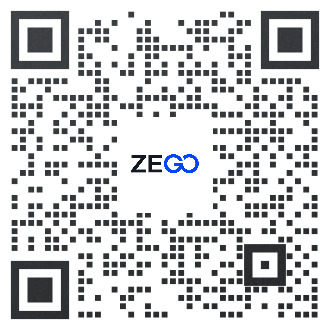- Documentation
- Voice Call
- Develop your app
- Integrate the SDK
Integrate the SDK
1 Prepare the environment
Before you attempt to integrate the ZEGO Express SDK, make sure that the development environment meets the following requirements:
- Prepare a Windows or macOS computer with an Internet connection.
- Use the latest version of the Chrome browser.
To check browser compatibility, please refer to Web SDK compatibility.
2 Integrate the SDK
You can integrate the SDK in any of the following ways.
Method 1: Download the SDK from the official website and integrate it manually
Download the latest version of SDK and decompress it.
Decompress the SDK compressed package and find the
ZegoExpressWebRTC-xxxjsfile underdist_js/.Create a new
index.htmlfile and move it to the same directory where theZegoExpressWebRTC-xxxjsfile is located, write the interface code, and importZegoExpressWebRTC-xxxjsin the head element of theindex.htmlfile. Among them, "xxx" is the version number of the SDK. Please refer to the file name modification after you decompress the compressed package in the previous step.
This is sample code for the index.html file:
<html>
<head>
<meta charset="UTF-8">
<title>Zego Express Video Call</title>
<style type="text/css">
* {
font-family: sans-serif;
}
h1,
h4 {
text-align: center;
}
#local-video, #remote-video {
width: 400px;
height: 300px;
border: 1px solid #dfdfdf;
}
#local-video {
position: relative;
margin: 0 auto;
display: block;
}
#remote-video {
display: flex;
margin: auto;
position: relative !important;
}
</style>
</head>
<body>
<h1>
Zego RTC Video Call
</h1>
<h4>Local video</h4>
<div id="local-video"></div>
<h4>Remote video</h4>
<div id="remote-video"></div>
<script> // The JS code in the tutorial can be pasted into this <script> tag
// const zg = new ZegoExpressEngine(appID, server);
</script>
</body>
</html>- Open the
index.htmlfile directly from the browser. When the basic interface appears, the integration is complete.
Method 2: Use NPM to integrate the SDK
- Create a new project.
Create a folder as the project folder for basic audio and video calling based on the following structure:
├── index.html
├── index.js- Copy the following code into the
index.htmlfile.
<html>
<head>
<meta charset="UTF-8">
<title>Zego Express Video Call</title>
<style type="text/css">
* {
font-family: sans-serif;
}
h1,
h4 {
text-align: center;
}
#local-video, #remote-video {
width: 400px;
height: 300px;
border: 1px solid #dfdfdf;
}
#local-video {
position: relative;
margin: 0 auto;
display: block;
}
#remote-video {
display: flex;
margin: auto;
position: relative !important;
}
</style>
</head>
<body>
<h1>
Zego RTC Video Call
</h1>
<h4>Local video</h4>
<div id="local-video"></div>
<h4>Remote video</h4>
<div id="remote-video"></div>
<script src="index.js"></script>
</body>
</html>- Install the SDK by using NPM.
In the terminal, use the change directory (cd) command to change the file's directory to the folder where the index.js file is located and execute the npm i zego-express-engine-webrtc command to install dependencies.
- The npm download package supports the TypeScript language (recommended).
- If you fail to execute the
npmcommand in the macOS or Linux system, the "permission denied" prompt appears. Please addsudobefore thenpmcommand and execute it again.
- Import the SDK to the
index.jsfile.
import {ZegoExpressEngine} from 'zego-express-engine-webrtc'or
var ZegoExpressEngine = require('zego-express-engine-webrtc').ZegoExpressEngine- Run and test the project on a local web server.
The local server (localhost or 127.0.0.1) runs the web application only as a test, and the production environment must use the HTTPS protocol.
Execute the
npm i live-server -gcommand on the command line to install live-server.Enter the root directory where the project is located.
Execute the
live-servercommand to run the project, and the browser automatically opensindex.html.
- Free trial
- 提交工单咨询集成、功能及报价等问题电话咨询400 1006 604Get ConsultingScan Wechat QR code

